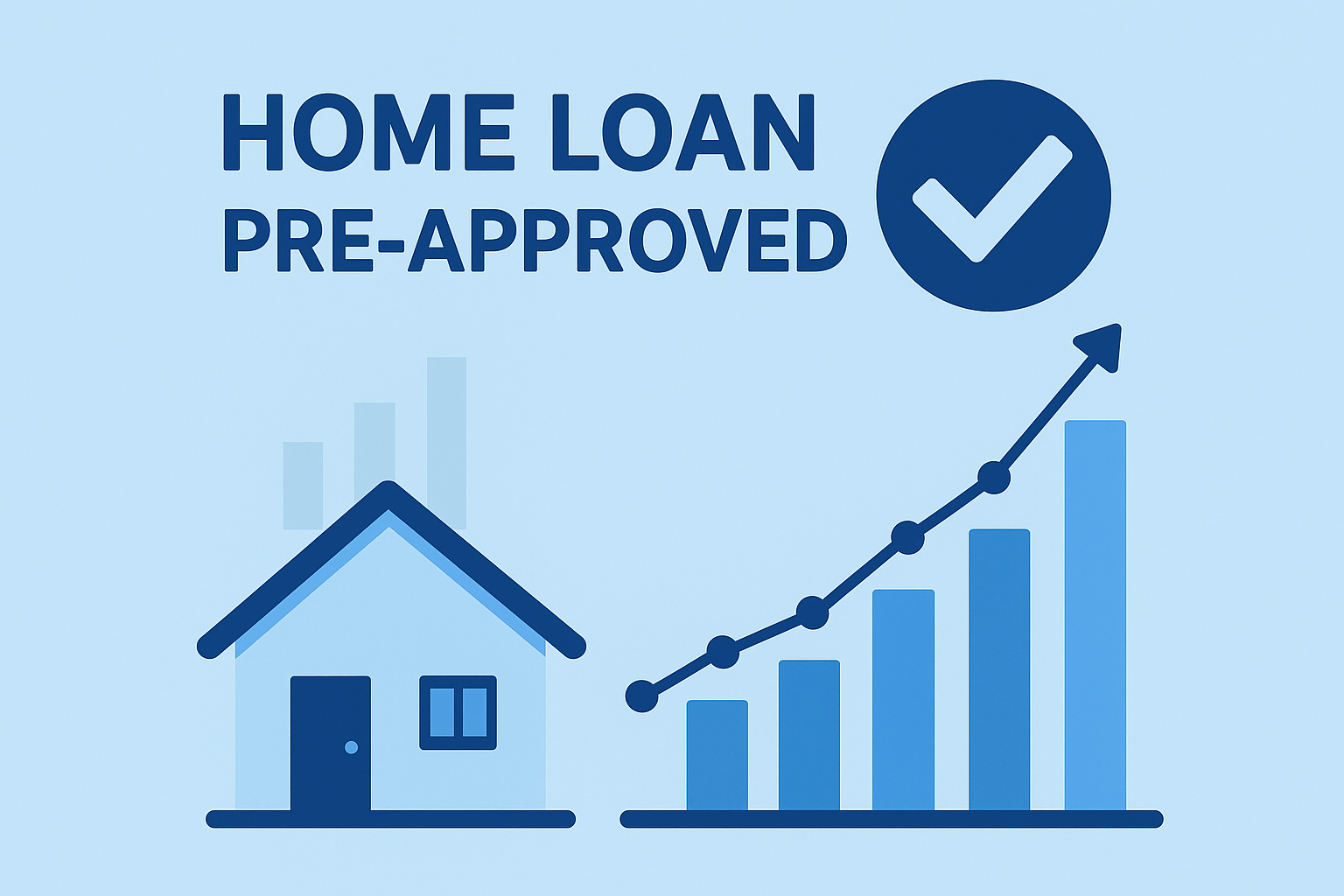Imagine this…
You find the perfect home. You’re ready to make an offer—and then someone else snags it because they were pre-approved and you weren’t. It happens all the time.
Getting pre-approved for a home loan isn’t just paperwork—it’s your VIP pass to serious house hunting. It shows sellers you’re credible, helps you stay within budget, and can fast-track your entire buying process.
Let’s walk through exactly how to do it—without stress, confusion, or costly mistakes.
🆚 Pre-Qualification vs. Pre-Approval: Know the Difference
Before we get into the how, it’s important to understand the why—and that starts with knowing how pre-approval is different from pre-qualification.
| Feature | Pre-Qualification | Pre-Approval |
|---|---|---|
| Process | Basic estimate, often verbal | Full financial review with documents |
| Timeframe | A few minutes to a day | Usually 3–7 business days |
| Strength of Offer | Weak—just a ballpark | Strong—backed by a lender |
| Legal Standing | Non-binding | Conditional commitment from the bank |
Bottom line: Pre-qualification is like window shopping. Pre-approval is showing up with cash in hand.
🔍 Step-by-Step: How to Get Pre-Approved for a Home Loan
1. Check Your Financial Health First
Before any lender takes you seriously, you’ll want to know where you stand. Ask yourself:
- Is your credit score solid? (In most countries, 620+ is the minimum, but 700+ gets better rates.)
- What’s your debt-to-income ratio (DTI)? Try to keep it under 43–50%.
- Have you had stable income for at least 6–12 months?
📝 Quick Tip: Avoid applying for new credit cards or loans during this time. Even a small financial change can delay your approval or hurt your terms.
2. Gather the Right Documents
This part might feel tedious—but having everything ready speeds up the process. Here’s what you’ll likely need:
📌 For salaried employees:
- Passport, visa (if applicable), and national ID
- Recent payslips (last 3–6 months)
- Employment certificate
- 6-month bank statements
- Credit report
📌 For self-employed applicants:
- All of the above, plus:
- Trade license / business registration
- Audited financial statements (last 2 years)
- VAT returns (if applicable)
🧠 Pro Tip: Make digital copies and keep them in a cloud folder. You’ll thank yourself later.
3. Compare Lenders—or Use a Mortgage Broker
You don’t have to go it alone. Mortgage brokers often have access to multiple banks and can negotiate on your behalf. Still, it’s good to do your own research:
- Compare interest rates (fixed vs. variable)
- Look at fees (processing, valuation, early settlement)
- Understand loan-to-value (LTV) ratios and minimum salary requirements
In the UAE, for example, most banks require:
- A minimum monthly salary of AED 10,000–15,000
- A maximum age of 65 at loan maturity for expats
- At least 20% down payment for expats (15% for UAE nationals)
4. Submit Your Application
Once you’ve chosen a lender or broker, it’s time to formally apply.
- Provide all necessary documents
- Authorize a credit check
- Complete your lender’s application forms
Most pre-approvals are issued within 3 to 7 working days and remain valid for 60 to 90 days.
📄 What You’ll Receive: A pre-approval letter stating your eligible loan amount, estimated interest rate, and conditions (like the maximum property value).
5. Use Your Pre-Approval Strategically
Now comes the exciting part—house hunting! But your pre-approval isn’t just a pass to browse—it’s leverage.
✅ Benefits of Pre-Approval:
- Sellers take you more seriously
- Speeds up the offer process
- Gives you a clear price range to shop within
- Makes you a preferred buyer in competitive markets
💡 Remember: Stay within budget. Just because you’re approved for AED 2 million doesn’t mean you should spend it all.
6. Avoid These Common Mistakes
Even smart buyers make avoidable errors during pre-approval. Don’t be one of them:
- ❌ Changing jobs or income after approval
- ❌ Opening new credit accounts
- ❌ Skipping the fine print in your pre-approval letter
- ❌ Assuming pre-approval = final approval (you still need property appraisal and underwriting)
🎯 Pro Tip: Don’t sign a purchase agreement before you’re confident in your loan’s terms—and understand all the conditions attached.
💬 Real Talk: My Personal Experience
When I was buying my first home, I thought talking to one bank was enough. Big mistake.
A friend recommended comparing at least three lenders, and it paid off—one bank offered a 0.5% lower rate and waived early settlement charges. That translated into tens of thousands saved over the life of the loan.
The pre-approval didn’t just help me get a better deal. It gave me the confidence to act quickly and walk away from properties I couldn’t comfortably afford.
🧭 Final Thoughts
Getting pre-approved for a home loan isn’t just a formality—it’s one of the smartest moves you can make as a buyer.
Let’s recap:
- ✅ Review your financials and credit score
- ✅ Prepare all your documents ahead of time
- ✅ Compare multiple lenders (or use a broker)
- ✅ Use your pre-approval wisely when shopping
- ❌ Don’t make financial changes mid-process
With the right strategy, your pre-approval becomes more than a letter—it becomes your path to ownership.
🚀 Call to Action
Ready to take the next step?
👉 Drop your questions or thoughts in the comments—what’s been your biggest challenge with pre-approval?
📩 Subscribe for more no-fluff guides on home buying, personal finance, and insider strategies tailored to your market.
🔗 Or, explore our full guide on First-Time Home Buying Mistakes to Avoid (link this internally if you have related content).




